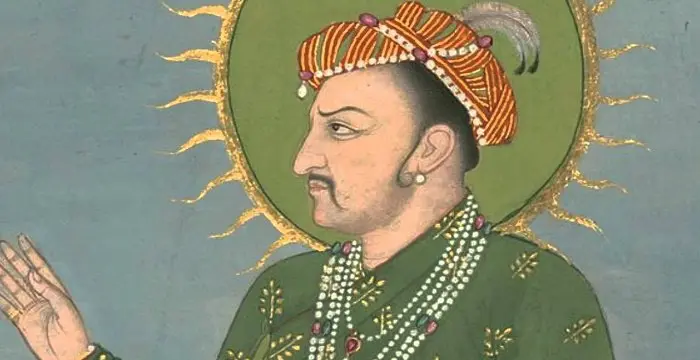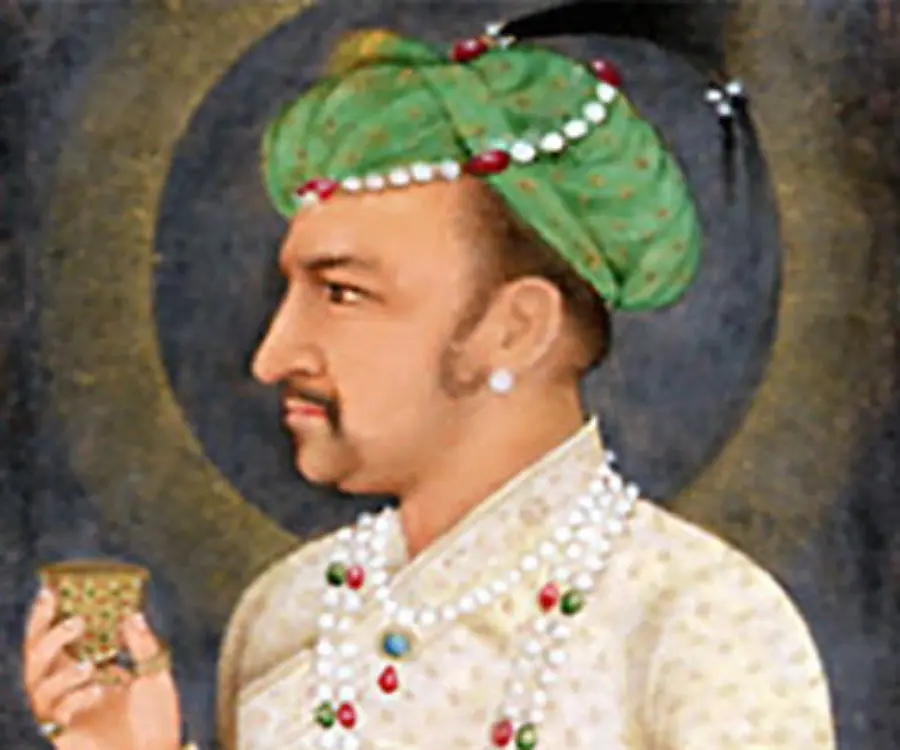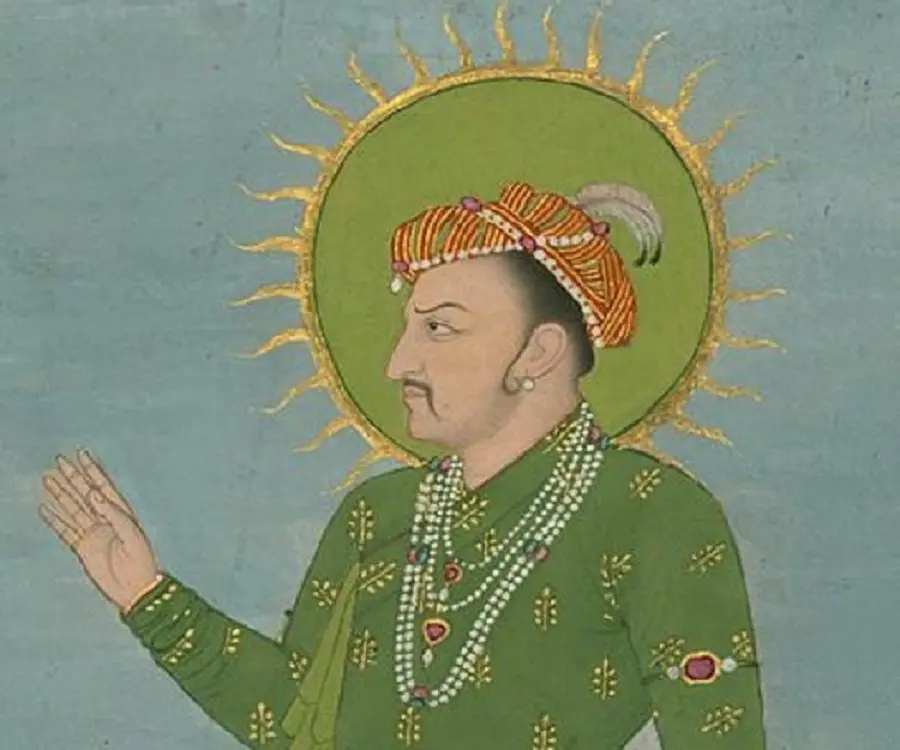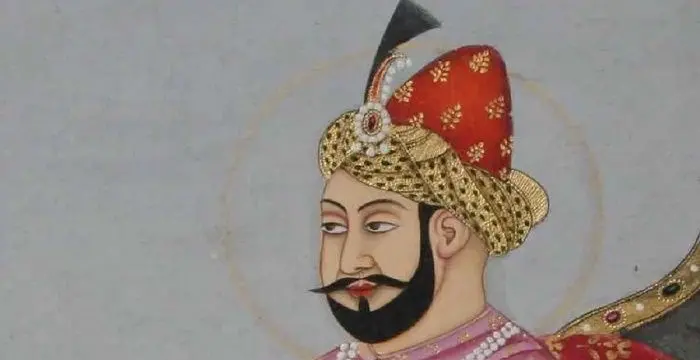
Jahangir - Emperors, Birthday and Childhood
Jahangir's Personal Details
Jahangir was the fourth Mughal emperor, counted amongst the greatest Indian Emperors
| Information | Detail |
|---|---|
| Birthday | August 31, 1569 |
| Died on | November 8, 1627 |
| Nationality | Indian |
| Famous | Historical Personalities, Emperors & Kings, Emperors, Kings, Mughal Emperor |
| Spouses | Nur Jahan, Taj Bibi Bilqis Makani |
| Siblings | Aram Banu Begum, Daniyal, Hassan, Hussain, Shahzadi Khanum, Shakr-un-Nissa Begum, Sultan Murad Mirza |
| Childrens | Shah Jahan |
| Birth Place | Fatehpur Sikri |
| Religion | Islam, Din-e Ilahi, Sunni Islam, Sufism |
| Gender | Male |
| Father | Akbar |
| Mother | Mariam-uz-Zamani |
| Sun Sign | Virgo |
| Born in | Fatehpur Sikri |
| Famous as | Mughal Emperor |
| Died at Age | 58 |
// Famous Emperors
Sundiata Keita
Sundiata Keita was the founder of the Mali Empire in West Africa. This biography profiles his childhood, early life, struggles, founding of empire, rule, administration, achievements and also gives some fun facts.
Ashoka
Ashoka was the third emperor of the Mauryan Dynasty and ruled almost the entire Indian subcontinent. This biography profiles his childhood, life, reign, achievements and timeline
Murad IV
Murad IV was one of the mighty Sultans in the history of the Ottoman Empire. This biography profiles his childhood, family, accession, rule, administration and timeline.
Jahangir's photo
Who is Jahangir?
Jahangir was the fourth Mughal emperor, counted amongst the greatest Indian Emperors. He ruled over India for a period of 22 years from 1605 to 1627, and was well known for his love for fine arts. As the eldest surviving son of the Mughal Emperor Akbar the Great, he was trained for succession from a young age. He was tutored by the best teachers his father could find and was given expert training in civil and military administration. With time he grew impatient for succession and revolted against his father in 1599 but was unsuccessful. The relations between Akbar and Jahangir became strained as a result of this revolt, and some historians suggest that Jahangir ultimately poisoned his father to death. He ascended to the throne shortly afterwards. As emperor, he proved to be an excellent administrator and his reign was marked by political stability and economic growth. He had a profound interest in fine arts and patronized the European and Persian arts, and played a major role in the development of Mughal arts. Having inherited a rich legacy from his father, he continued with several of Akbar’s policies. Jahangir was also notorious for his vices. He was addicted to alcohol, opium, and women, and was infamous for the acts of brutality he inflicted upon the Sikhs.
// Famous Mughal Emperor
Akbar
Mughal emperor Akbar was one of the greatest monarchs in the history of India. This biography profiles his childhood, life, rule, achievements and timeline
Shah Jahan
Shah Jahan was the fifth Mughal Emperor of India. He is famous for constructing the Taj Mahal. This biography of Shah Jahan provides detailed information about his childhood, life, achievements, works & timeline.
Humayun
Humayun was the second Mughal ruler of territories in the Indian subcontinent. This biography of Humayun provides detailed information about his childhood, life, achievements, works & timeline.
Childhood & Early Life
He was born as Nur-ud-din Mohammad Salim on 31 August 1569 in Fatehpur Sikri to Mughal Emperor Akbar and his Rajput wife Mariam-uz-Zamani Begum (also known as Jodha Bai). He was the emperor’s much longed for son.
As the eldest surviving son of Akbar, he was named the successor quite early on in life. The emperor ensured that the prince received education from the best possible tutors. Salim learned Persian, Turki, Arabic, Hindi, arithmetic, history, and geography among other subjects. He also developed an interest in composing verses.
The prince was also trained in civil and military administration and was placed in charge of a regiment of troops during the Kabul expedition of 1581. He was promoted to the rank of an army officer by 1585.
Salim grew impatient with time and revolted against Akbar in 1599. His attempt was unsuccessful and this incident created a rift between the father and son.
Accession & Reign
Akbar died on 27 October 1605—some believe he was poisoned by Salim. A few days after his father’s death, Salim ascended the throne with the title of Nur-ud-din Muhammad Jahangir Badshah Ghazi on 3 November 1605.
He came to the throne at a time of great political chaos. There were several other contenders to the throne, and Jahangir was challenged by his own son, Prince Khusrau Mirza. Jahangir defeated the prince in 1606 and confined him in the fort of Agra. As punishment Khusrau Mirza was blinded.
Jahangir continued with several of his father’s policies. Like Akbar, he too embarked on a series of military campaigns aimed at expanding the territories under Mughal rule. He successfully ended an ongoing war with the Rajput principality of Mewar, in 1614.
In 1622, he sent his son, son Prince Khurram (later Shah Jahan), to fight against the combined forces of Ahmednagar, Bijapur and Golconda. Khurram emerged victorious following the conflicts and soon he challenged his own father for the throne. Jahangir was able to subdue his rebellious son and retain power.
Jahangir had a deep interest in matters relating to arts and culture. During his reign he encouraged artists and painters, and is credited to have played a leading role in the development of Mughal arts and culture. He also patronized European and Persian arts. The emperor was also known for his architectural works, the most famous work undertaken during his reign being the exquisite Shalimar Gardens in Kashmir.
Jahangir, though notorious for the brutality he inflicted upon his own kin, was also known for his sense of fairness and justice, and his efforts for promoting administrative efficiency. He enacted several liberal decrees which showed his great concern for the welfare of his citizens, and installed the famous golden "chain of justice".
Like Akbar, Jahangir’s rule was also characterized by religious tolerance. However, the Mughals developed hostile relations with the emerging clan of Sikhs led by the fifth Sikh guru, Arjan Dev. The guru had supported Jahangir's rebel son Khusrau Mirza which prompted Jahangir to order Arjan Dev’s execution. The guru was viciously tortured to death.
The Mughal emperor was a complex person. Even though a successful ruler, he was infamous for his brutality. He was also addicted to alcohol, opium, and women. He has been criticized for giving his wife Nur Jahan too much power in the imperial court.
Major Works
Jahangir is most famous for installing the golden "chain of justice” outside the castle of Agra. The chain, which was attached to some bells, would ring the bells when pulled and summon the emperor. It was meant to be a link between the citizens and the emperor, and it was announced that any aggrieved person ringing the bells would be granted a personal audience with the emperor.
Personal Life & Legacy
Jahangir was married several times. Some of his wives were Saliha Banu Begum, Khas Mahal Begum, Jagat Gosain Begum, Malika Shikar Begum, Sahib Jamal Begum, Malika Jahan Begum, Nur-un-Nissa Begam, Koka Kumari Begum, and Kanwal Rani Begum.
His most prominent and powerful wife was Mehr-Un-Nisa or Nur Jahan, the widow of a rebel officer, Sher Afgan, of Mughals. He married her in 1611 and she went on to greatly influence the emperor during the later period of his reign.
Jahangir died of an illness on 7 November 1627. At the time of his death, he was traveling from Kashmir to Lahore. Jahangir was succeeded by his third son, Prince Khurram who took the title of Shah Jahan.
Jahangir has often been portrayed in Indian films and television serials, some of them being the 1939 film ‘Pukar’, the 1953 film ‘Anarkali’, and the 1960 film ‘Mughal-e-Azam’.
// Famous Kings
Sundiata Keita
Sundiata Keita was the founder of the Mali Empire in West Africa. This biography profiles his childhood, early life, struggles, founding of empire, rule, administration, achievements and also gives some fun facts.
Ashoka
Ashoka was the third emperor of the Mauryan Dynasty and ruled almost the entire Indian subcontinent. This biography profiles his childhood, life, reign, achievements and timeline
Murad IV
Murad IV was one of the mighty Sultans in the history of the Ottoman Empire. This biography profiles his childhood, family, accession, rule, administration and timeline.
Jahangir biography timelines
- // 31st Aug 1569He was born as Nur-ud-din Mohammad Salim on 31 August 1569 in Fatehpur Sikri to Mughal Emperor Akbar and his Rajput wife Mariam-uz-Zamani Begum (also known as Jodha Bai). He was the emperor’s much longed for son.
- // 1581 To 1585The prince was also trained in civil and military administration and was placed in charge of a regiment of troops during the Kabul expedition of 1581. He was promoted to the rank of an army officer by 1585.
- // 1599Salim grew impatient with time and revolted against Akbar in 1599. His attempt was unsuccessful and this incident created a rift between the father and son.
- // 3rd Nov 1605Akbar died on 27 October 1605—some believe he was poisoned by Salim. A few days after his father’s death, Salim ascended the throne with the title of Nur-ud-din Muhammad Jahangir Badshah Ghazi on 3 November 1605.
- // 1606He came to the throne at a time of great political chaos. There were several other contenders to the throne, and Jahangir was challenged by his own son, Prince Khusrau Mirza. Jahangir defeated the prince in 1606 and confined him in the fort of Agra. As punishment Khusrau Mirza was blinded.
- // 1611His most prominent and powerful wife was Mehr-Un-Nisa or Nur Jahan, the widow of a rebel officer, Sher Afgan, of Mughals. He married her in 1611 and she went on to greatly influence the emperor during the later period of his reign.
- // 1614Jahangir continued with several of his father’s policies. Like Akbar, he too embarked on a series of military campaigns aimed at expanding the territories under Mughal rule. He successfully ended an ongoing war with the Rajput principality of Mewar, in 1614.
- // 1622In 1622, he sent his son, son Prince Khurram (later Shah Jahan), to fight against the combined forces of Ahmednagar, Bijapur and Golconda. Khurram emerged victorious following the conflicts and soon he challenged his own father for the throne. Jahangir was able to subdue his rebellious son and retain power.
- // 7th Nov 1627Jahangir died of an illness on 7 November 1627. At the time of his death, he was traveling from Kashmir to Lahore. Jahangir was succeeded by his third son, Prince Khurram who took the title of Shah Jahan.
// Famous Historical Personalities
Sundiata Keita
Sundiata Keita was the founder of the Mali Empire in West Africa. This biography profiles his childhood, early life, struggles, founding of empire, rule, administration, achievements and also gives some fun facts.
Ashoka
Ashoka was the third emperor of the Mauryan Dynasty and ruled almost the entire Indian subcontinent. This biography profiles his childhood, life, reign, achievements and timeline
Jetsun Pema
Jetsun Pema is the Queen consort of Bhutan. Check out this biography to know about her childhood, family life, achievements and fun facts about her life.
Murad IV
Murad IV was one of the mighty Sultans in the history of the Ottoman Empire. This biography profiles his childhood, family, accession, rule, administration and timeline.
Xerxes I
Xerxes I (Xerxes the Great) was the fourth and the most famous king of the Archaemenid dynasty of Persia. This biography profiles his childhood, family, personal life, life history, achievements, campaigns, administration, death and other facts.
Sargon of Akkad
Sargon of Akkad, also called ‘Sargon the Great’, ‘Sarru-Kan’ and ‘Shar-Gani-Sharri’, was the founder and first king of the Akkadian Empire. This biography profiles his childhood, life, rule, administration, timeline, and gives some fun facts.
Jahangir's FAQ
What is Jahangir birthday?
Jahangir was born at 1569-08-31
When was Jahangir died?
Jahangir was died at 1627-11-08
Where was Jahangir died?
Jahangir was died in Kashmir
Which age was Jahangir died?
Jahangir was died at age 58
Where is Jahangir's birth place?
Jahangir was born in Fatehpur Sikri
What is Jahangir nationalities?
Jahangir's nationalities is Indian
Who is Jahangir spouses?
Jahangir's spouses is Nur Jahan, Taj Bibi Bilqis Makani
Who is Jahangir siblings?
Jahangir's siblings is Aram Banu Begum, Daniyal, Hassan, Hussain, Shahzadi Khanum, Shakr-un-Nissa Begum, Sultan Murad Mirza
Who is Jahangir childrens?
Jahangir's childrens is Shah Jahan
What is Jahangir's religion?
Jahangir's religion is Islam, Din-e Ilahi, Sunni Islam, Sufism
Who is Jahangir's father?
Jahangir's father is Akbar
Who is Jahangir's mother?
Jahangir's mother is Mariam-uz-Zamani
What is Jahangir's sun sign?
Jahangir is Virgo
How famous is Jahangir?
Jahangir is famouse as Mughal Emperor











